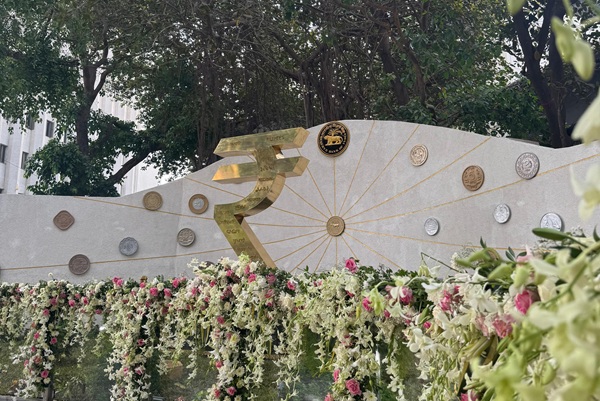.png)
Richard is an independent financial journalist who tracks financial markets and macroeconomic developments
March 7, 2025 at 2:56 PM IST
The Reserve Bank of India has been operating with a leadership vacuum at the top of its monetary policy apparatus for nearly two months. The central bank’s Deputy Governor post overseeing the policy has remained vacant since the departure of Michael Patra in the middle of January.
The delay is neither accidental nor unprecedented—but is particularly troubling given the broader context at India’s central bank.
This vacancy comes just as the Reserve Bank underwent a leadership shift. Long-serving Governor Shaktikanta Das completed his term in December, handing over the reins to Sanjay Malhotra, a career bureaucrat from the finance ministry. While Malhotra brings extensive administrative experience, he is not an economist and has no direct experience with monetary policy.
His arrival coincides with the exit of Patra, a career central banker and economist who played a crucial role in crafting India’s monetary response to the Covid-19 shock.
The departure of seasoned hands such as Das and Patra, who shaped India’s policy approach during the pandemic and its aftermath, leaves the central bank without the institutional memory that guided its recent decisions. Das, with his deep understanding of fiscal-monetary coordination, and Patra, with his economist’s grasp of inflation dynamics, formed a steady and complementary team. Their near-simultaneous exits have created a policy vacuum at precisely the moment when stability and continuity matter most.
While speculation tends to swirl around all senior Reserve Bank appointments, the government had every opportunity to avoid this situation. Applications for Patra’s successor were invited as early as the start of November 2024—well before his retirement. Interviews were completed by mid-January, ensuring a shortlist was ready before Patra’s term ended. Yet the position has remained vacant for weeks, leaving Deputy Governor M. Rajeshwar Rao—whose primary remit is financial supervision—to temporarily oversee monetary policy.
This is not an isolated lapse. When Viral Acharya resigned abruptly in 2019, it took six months to appoint his successor. During that period, B.P. Kanungo juggled his own responsibilities with monetary policy oversight. Acharya’s own appointment in 2017 took nearly three months.
The consequences of these delays go beyond administrative inconvenience. Stable leadership is critical to the credibility of India’s monetary policy framework. RBI decisions do not just set rates—they also shape market expectations and investor confidence. Prolonged leadership gaps fuel speculation, muddy communication, and create unnecessary uncertainty over the central bank’s policy signals.
The absence of a deputy governor with dedicated monetary policy oversight is already showing.
Malhotra, in his very first Monetary Policy Committee meeting as governor, presided over a 25-basis-point rate cut—the first in five years. However, the rate cut was not accompanied by any immediate steps to boost liquidity, which falls outside the Monetary Policy Committee’s remit. Still, liquidity support is crucial to ensure rate cuts translate into lower borrowing costs and easier credit conditions.
Effectively playing catch-up, the RBI this week announced a ₹1 trillion open market bond purchase to ease liquidity. It also announced a $10 billion forex swap—its second this month—to bolster reserves and inject liquidity.
This reactive approach highlights why a fully-staffed monetary policy team, including a deputy governor, is critical to aligning rate decisions with liquidity management.
Delayed Decision
The appointment process itself was well-structured at first. The Financial Sector Regulatory Appointments Search Committee—comprising Governor Sanjay Malhotra and Cabinet Secretary T.V. Somanathan—interviewed diverse candidates.
According to reports, the list included economists such as Poonam Gupta, Prachi Mishra, Chetan Ghate, N.R. Bhanumurthy, and Suresh Babu. Bureaucrats Ashish Vachhani and Ritvik Pandey. Even Chief Economic Advisor V. Anantha Nageswaran was interviewed, though he ultimately remained in his current role after securing a two-year extension.
The lack of urgency is perplexing.
The Deputy Governor for monetary policy acts as a crucial bridge between the external members of the Monetary Policy Committee and the RBI’s internal staff. The role helps craft the policy narrative, anchors market communication, and ensures technical consistency in rate-setting decisions.
Leaving this seat vacant—especially with a new, non-economist governor at the helm—undermines the clarity and cohesion the Reserve Bank is known for.
The RBI’s reputation for professionalism and predictability has long been a key strength for India’s economy. That reputation rests not only on policy outcomes but also on the transparency and smoothness of leadership transitions.
Delays in appointments to such critical positions risk eroding that reputation at a time when global and domestic uncertainties are already mounting.




